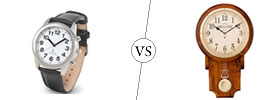Difference between Rubber Wood and MDF
Key difference: Rubberwood is essentially the wood that comes from the rubber tree, the Pará rubber tree to be specific. It is a type of hardwood. Hardwood is the wood that comes from an angiosperm tree. This is a type of tree that has seeds that are enclosed, be it in pods, a shell, a covering or in fruit. MDF stands for medium-density fiberboard. It is an engineered wood product created by breaking down wood residuals into wood fibers combining with wax and a resin binder. See the difference between Timber and Lumber.
 Rubberwood is essentially the wood that comes from the rubber tree, the Pará rubber tree to be specific. The Pará rubber tree is scientifically known as Hevea brasiliensis. As the wood of a rubber tree, one would expect it to be soft and springy like, well, rubber. However, rubberwood is essentially a hardwood. See Rubberwood Vs. Hardwood.
Rubberwood is essentially the wood that comes from the rubber tree, the Pará rubber tree to be specific. The Pará rubber tree is scientifically known as Hevea brasiliensis. As the wood of a rubber tree, one would expect it to be soft and springy like, well, rubber. However, rubberwood is essentially a hardwood. See Rubberwood Vs. Hardwood.
Wood is mainly classified into two categories: hardwood and softwood. Hardwood is the wood that comes from an angiosperm tree. This is a type of tree that has seeds that are enclosed, be it in pods, a shell, a covering or in fruit. For example, apples or nuts and seeds like acorns and walnuts. These types of seeds allow birds and insects to be attracted to the flowers of the tree and be able to carry the pollen to other trees. This is also the reason why hardwood trees are not often bunched together but are spaced apart and often have other trees in-between them.
Most hardwood trees are also deciduous is nature. A deciduous tree is a tree that loses its leaves annually. Hardwood trees are also slower to grow, taking their own time. Due to this, most hardwood is dense. This is also the reason that hardwood is expensive, as it takes longer to grow. Some famous hardwoods include maple, balsa, oak, elm, mahogany, and sycamore.
See: Oak Vs. Ash.
The Pará rubber tree is essentially grown in plantations for the latex it produces, which is then harvested and used in the production of commercial rubber. However, after 25 – 30 years, the production of latex in the tree becomes very low; hence the tree is often cut down and replaced with another, which would be more financially viable.
Previously, the felled rubber tree would be burned, as there would be no further use for it. However, in lieu of growing environmentalism, the wood from the felled rubber tree is now recycled and used in various applications. The most common applications of the rubberwood include furniture, toys, and kitchen accessories. Like all hardwoods, rubberwood comes in varying degrees of quality. See: Teakwood Vs. Rubberwood.
Furniture made with hardwood tends to be long-lasting and durable. Due to this hardwoods are generally accepted as being the highest quality wood. However, with the high density of most hardwoods, they have a tendency of splitting, due to which the carpenter has to take extra care while making a piece of furniture. Despite this, some hardwoods are preferred for a particular use. The advantage of rubberwood is that it is a dense grain that is easily controlled in the kiln drying process. This makes is easily manageable in the kitchen. However, rubberwood is not suitable for outdoor usage. Furthermore, rubberwood is touted over other types of wood because as it is essentially a recycled wood, it is more eco-friendly.
 MDF stands for medium-density fiberboard. It is an engineered wood product. It is created by breaking down wood residuals into wood fibers. These wood fibers are then combined with wax and a resin binder. The mixture is then flattened and made into panels by applying high temperature and pressure.
MDF stands for medium-density fiberboard. It is an engineered wood product. It is created by breaking down wood residuals into wood fibers. These wood fibers are then combined with wax and a resin binder. The mixture is then flattened and made into panels by applying high temperature and pressure.
MDF is quite similar to traditional plywood but has a number of advantages over it as well. Like plywood, MDF can be used as a building material. MDF’s advantage is that it is made up of separated fibers. This allows it to be denser than plywood, as well as stronger and denser than particle board.
Furthermore, MDF does not contain knots or rings like natural wood. This means that the MDF is more uniform in nature and is easier to cut and work with than traditional wood. MDF has a hard, flat, smooth surface that makes it ideal for veneering. MDF can also be glued, doweled or laminated. However, MDF is similar to wood in the manner that it has the possibility of splitting while working with it, especially while installing woodscrews without pilot holes. Also, MDF does not hold smooth-shank nails well or fine-pitch screws.
Formaldehyde resins are often used to bind MDF together during manufacture.
A disadvantage of working with MDF is that when it is cut a large number of dust particles and the urea-formaldehyde is released into the air. This is why it is even more important for one to use protective gear while working with MDF, especially a respirator. It is also recommended that one should work with MDF in a controlled and ventilated environment.
Additionally, the MDF constantly emits urea-formaldehyde and other volatile organic compounds into the air for at least several months after manufacture. These compounds pose health risks at sufficient concentrations. Hence, it is recommended that MDF is painted on all sides of the finished product in order to seal in the urea-formaldehyde. Wax and oil finishes may also be used as finishes; however, they are less effective at sealing in the urea-formaldehyde.
Image Courtesy: europack.co.in, avsforum.com









Add new comment